This post may contain affiliate links, which means I get a small percentage of the sale at no extra cost to you. I only recommend items I love and have had a positive experience with. Thank you!
We are going to show you how easy it is to make the most delicious cream cheese with raw milk. You will need cream, a starter culture and time . . . that’s it!!
On a recent trip to our local dairy, Mr. Tidbits and I had the chance to taste some homemade cream cheese made from raw milk cream. It was good. I mean really, really good! So good that we couldn’t stop thinking about it! In fact, my husband and I loved it so much that we knew we had to figure out how to make that delicious raw milk cream cheese at home.
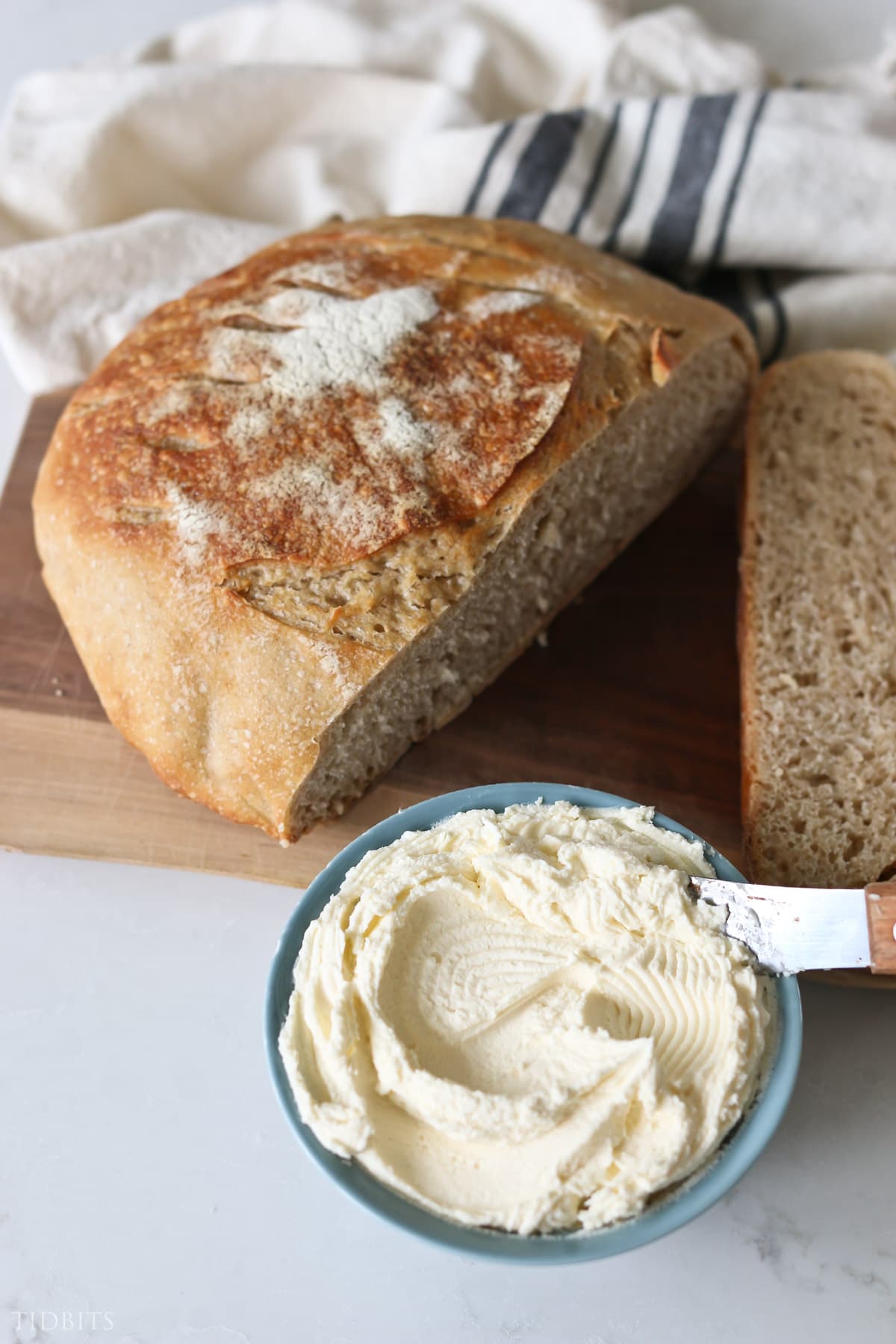
Mr. Tidbits and I have been experimenting with homemade cream cheese for a while now and we think we’ve come up with the easiest way to make our own cream cheese. It’s so much simpler than I imagined. We’ll give you all the details and provide a printable recipe card at the end of this blogpost. If you want to see this process in action, checkout our latest YouTube video where we show you how we make amazing cream cheese from raw milk.

What is Raw Milk?
Raw milk is milk that has not been pasteurized. Pasteurization is a process of raising the temperature of milk to a certain level and holding it there for set a period of time. The purpose of pasteurization is to kill germs and bacteria. However, many people feel that pasteurization also reduces the nutrition and health benefits of milk.
I’ve been very happy having my family drink raw milk, but don’t worry. This isn’t going to be a social commentary about the merits of raw vs. pasteurized milk. You should do what you feel is best for you! Raw milk does have potential risks. Please do your own research when determining if raw milk products are good for you and your family.
Is Raw Milk Cream Cheese Healthy for You?
This homemade cream cheese is packed with probiotics! It’s great for gut health and our microbiome. By using raw milk that hasn’t been pasteurized, many of the good bacteria and natural vitamins/minerals from the milk are preserved. We like to use kefir or kefir grains when we make this cream cheese. These cultures add to all that wonderful bacteria and aids your body in digestion.
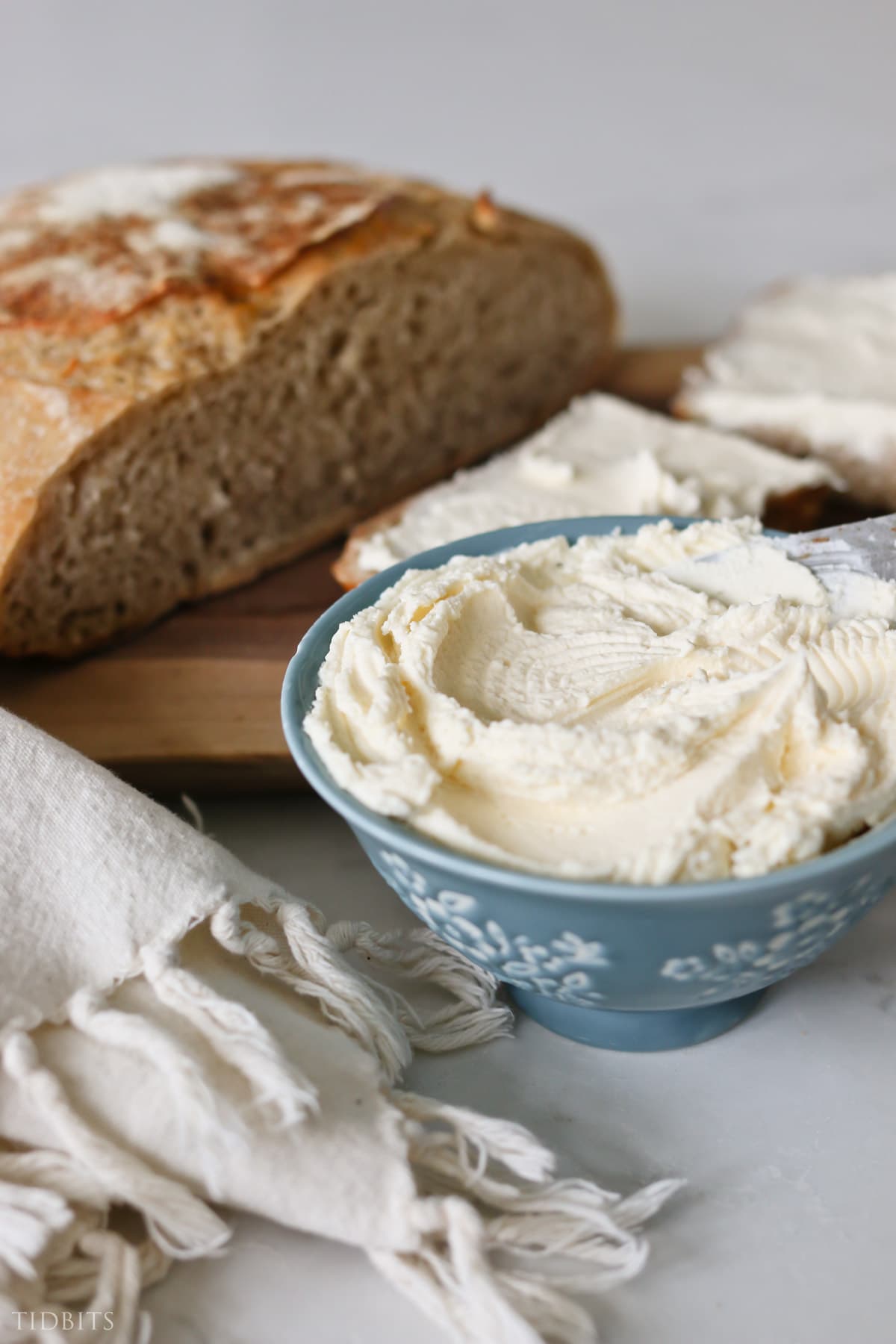
Because we use real cream in this cream cheese recipe, the fat content is high. If you are concerned about cholesterol or foods with higher fat content, you may want to not eat cream cheese.
What Does Homemade Cream Cheese from Raw Milk Taste Like?
Cream cheese made from raw milk cream has the most delectable taste! It is so creamy and rich! In my opinion, it has a much richer flavor than traditional store-bought cream cheeses. It’s fantastic on a bagel or anything else you want to slather it on.
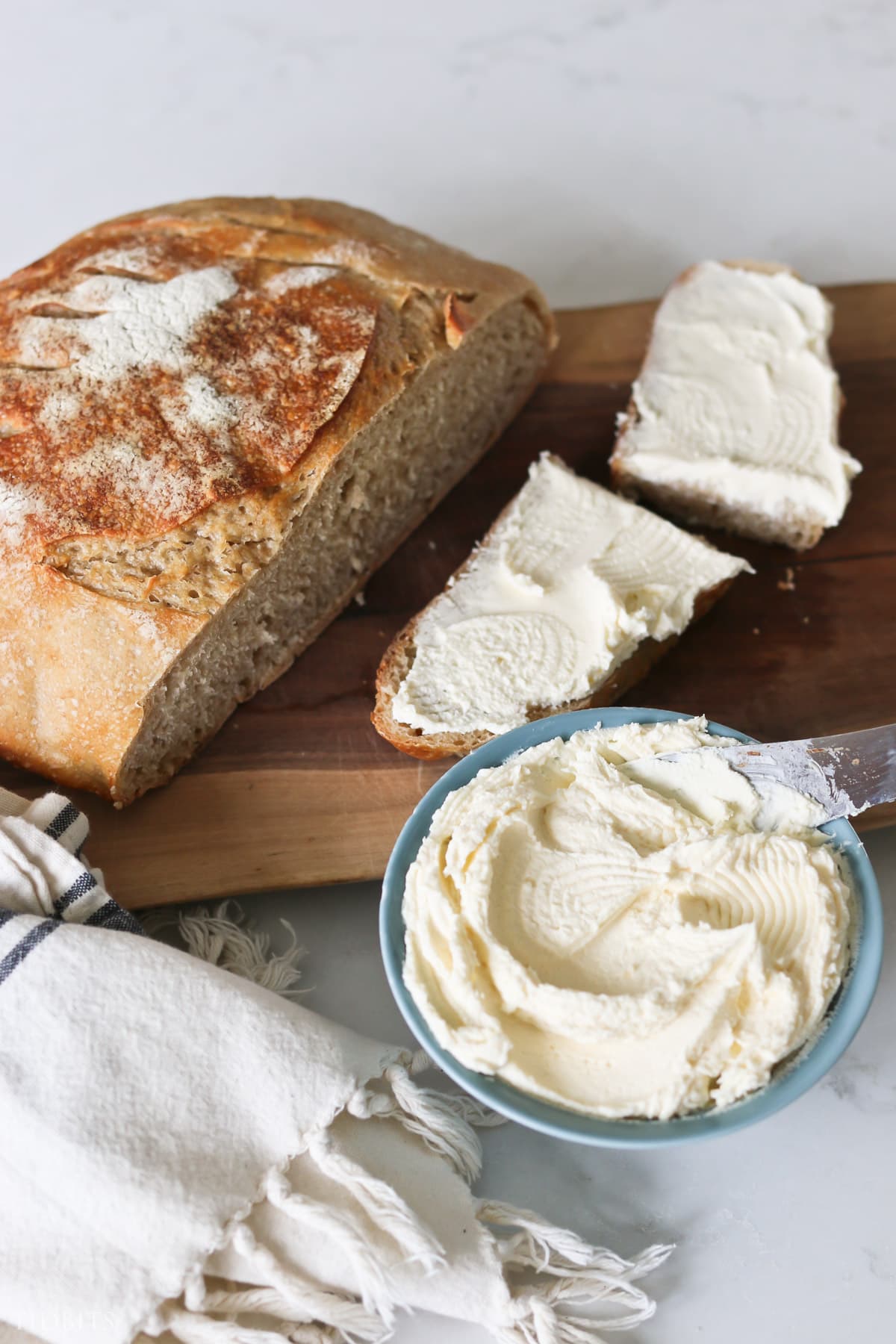
If you don’t like the taste of kefir, but choose to use kefir or grains for this recipe, you can rest assured that you won’t notice kefir flavor in the finished cream cheese. It simply does its work to make the most delicious cream cheese you will ever taste. You won’t be happy with store-bought cream cheese ever again. #sorrynotsorry
What Starter Cultures Can You Use to Make This Cream Cheese?
The starter culture is the magic ingredient that will turn your cream into cream cheese. Starter cultures contain the good bacteria or living microorganisms that are necessary to change the form of the dairy products. It does this by changing the milk sugar (lactose) into acid (lactic acid). This makes dairy products become sour and thicker – or in other words – fermented or cultured.
These are the cultures we suggest for making homemade cream cheese:
- Kefir Grains (preferred method)
- Use about 1 Tablespoon of kefir grains per pint of cream
- Kefir
- Use about 1 Tablespoon of active kefir per pint of cream
- Whey
- Use about 1 Tablespoon of fresh whey per pint of cream (use whey that is no more than 2 days old). This is a great thing to use if you regularly make homemade yogurt, ricotta or other cheese and have fresh whey.
What are Kefir Grains?
Kefir grains are gelatinous beads of beneficial bacteria and yeast. They’re used to turn regular milk into kefir (aka fermented or cultured milk). The term “grain” in kefir grains refers to the granular shapes of the beads. These white, sticky blobs of bacteria and yeast clump together to look like small heads of cauliflower. It may not sound like the most beautiful thing, but kefir grains are pretty incredible!
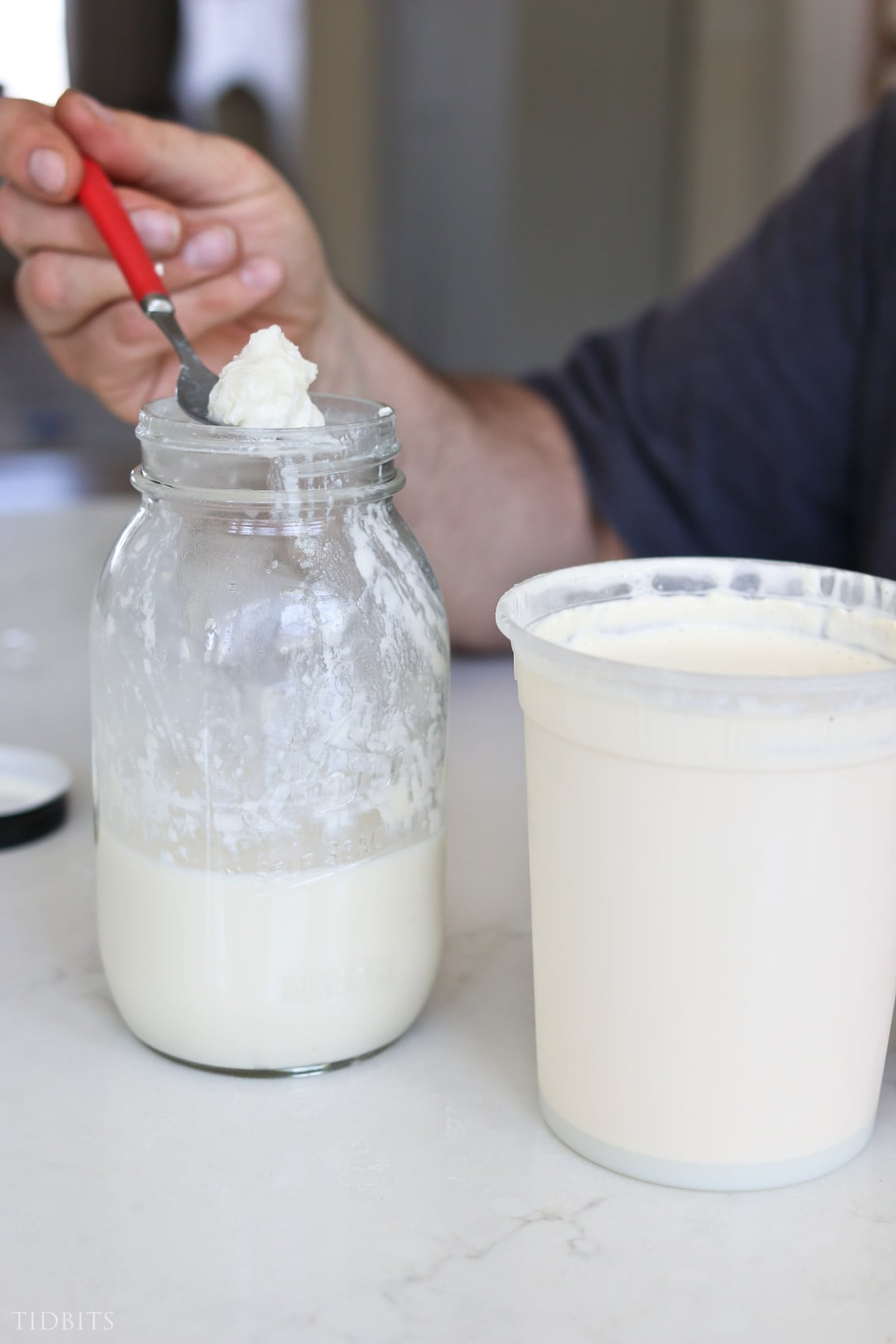
When you add kefir grains to milk, they start fermenting the milk into kefir right away. Once the milk has been fermented, the kefir grains can be removed and used for your next project. That’s why we love to use kefir grains for making cream cheese. They’re the gift that keeps on giving!
What is Kefir?
Kefir is fermented or cultured milk. Kefir drinks are full of health benefits! They’re packed with calcium, vitamins and probiotics. Because kefir has been fermented, it contains the beneficial bacteria and yeast needed to make cream cheese. If you have kefir, you can use it in this recipe for homemade cream cheese.
What is Whey?
Whey is the cloudy liquid that separates from milk curds during fermentation. You’ll often see it as a by-product of cheese or yogurt making. Whey is a protein and therefore has many health benefits. If you make your own cheese or yogurt, you may have whey left over. You can use that fermented whey to make homemade cream cheese. Just be sure that your whey is not more than a couple days old.
Supplies and Ingredients for Making Homemade Cream Cheese
You won’t need much to make your own cream cheese! A few kitchen basics will do the trick. You’ll want:
- 32 oz. of real cream
- 1 Tablespoon of a starter culture (kefir grains, kefir or whey)
- A container with a lid to store your fermenting cream in
- A bowl or pitcher to strain liquid into
- Cheesecloth for straining liquid from cream cheese
- A dowel, wooden spoon or something else to tie your cheesecloth around to keep it suspended as it strains
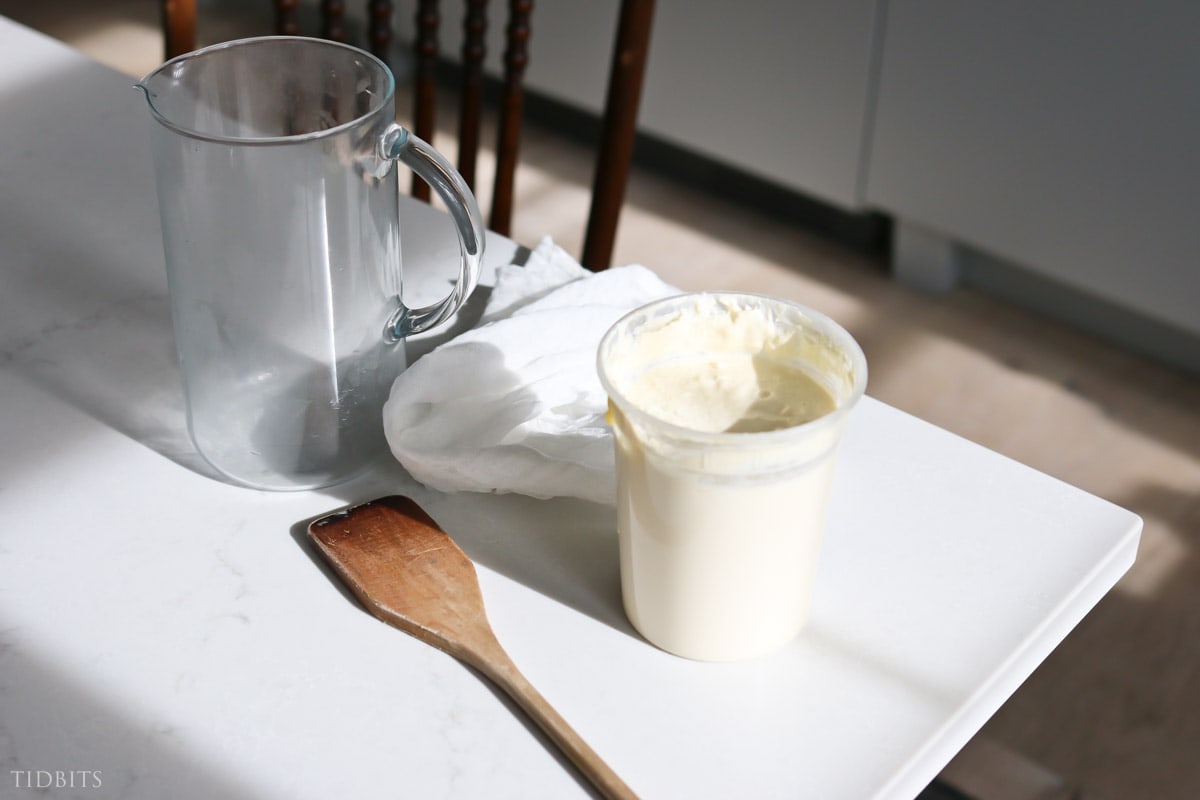
Steps for Making Cream Cheese from Raw Milk
- Place your raw milk cream and starter culture in a container with a lid and seal
- Allow cream and starter culture to sit out for around 24 hours
- Once cream has thickened significantly, remove kefir grain if using grains
- Place a double layer of cheese cloth across a bowl or pitcher
- Pour thickened cream into cheesecloth covered bowl or pitcher
- Take the ends of the cheesecloth and tie around a dowel, spoon or other long kitchen utensil
- Lay the dowel or spoon across the bowl or pitcher so that the cheesecloth bag in suspended
- Allow the cream cheese to strain for around 4 hours
- Once no more liquid is draining from the cream cheese, remove from the cheesecloth
- Stir the cream cheese and store covered in the refrigerator for 4-5 days
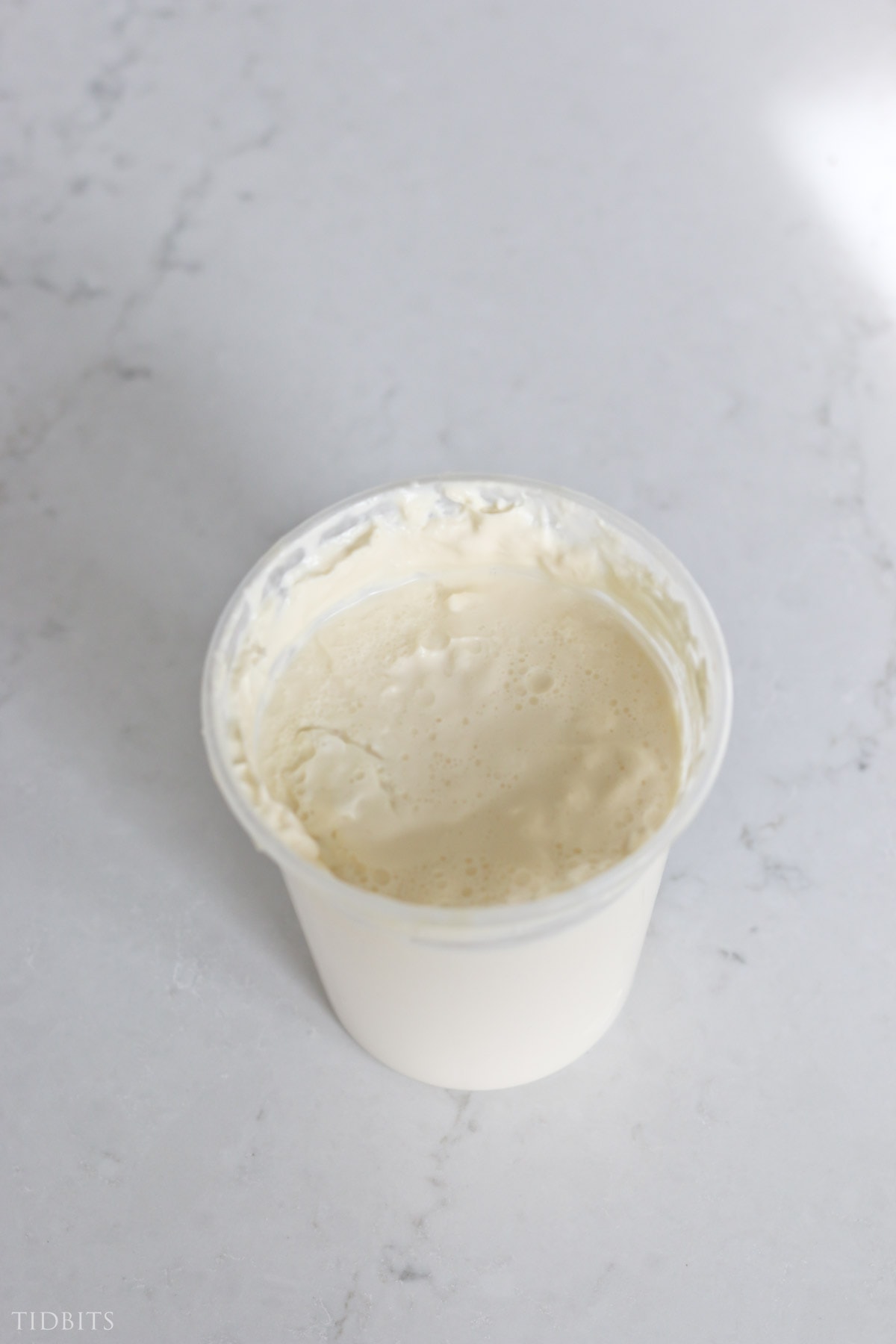
More Homemade Cream Cheese Ideas
Now that you know how to make your own cream cheese you can start experimenting. Use your homemade cream cheese recipe as a base for delicious cream cheese frosting. Try your cream cheese in a cheesecake. Stir in some garlic or fresh herbs for a flavored cream cheese spread. Whatever you make with your homemade cream cheese is going to taste great!
What Are the Other Methods of Making Cream Cheese from Raw or Pasteurized Cream?
You will find many other ways to make cream cheese online. Our method is fairly unique but it’s the most hands-off and effortless method we’ve seen. Here is a summery of other methods we’ve seen:
- You can boil milk, add lemon juice and salt, and let it cool and thicken. Then strain. There won’t be any probiotics in this method.
- You can strain plain yogurt for a very long time until it thickens. This won’t really have the same rich taste and texture as using cream.
- There may be powdered cultures you can start with instead of kefir, kefir grains or whey. These can be expensive for just a tiny bit.
Common Questions About Raw Milk and Homemade Cream Cheese
Where Can I Buy Raw Milk and Cream?
We are lucky enough to live close to a dairy that sells raw milk products. Your state or country will need to have the laws in place that allow raw dairy products to be sold. Check your local business listings to see if there is a dairy near you that can sell raw milk.
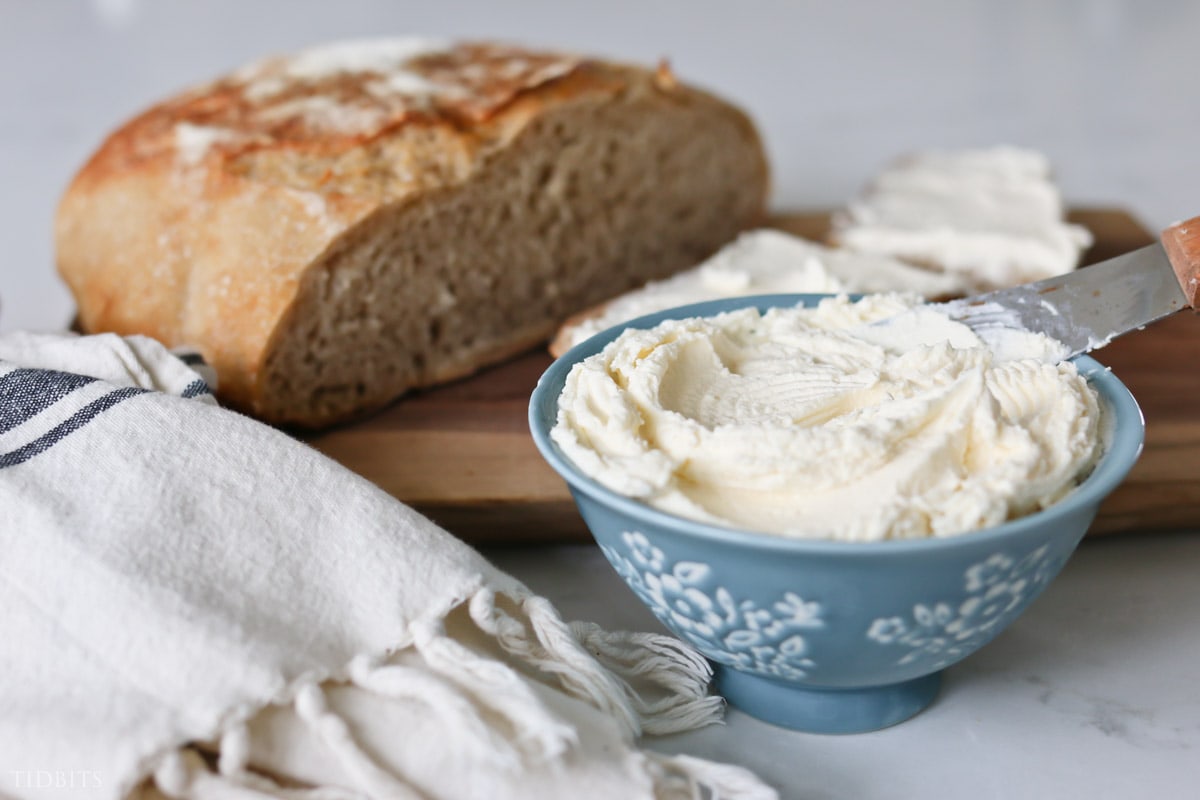
You may also want to check with local farmers that milk their own cows. There may be some in your area who would be able to provide you with raw milk.
Can I use Store Bought Cream for this Cream Cheese Recipe?
Yes, you can use store bought cream, but it has to be real heavy cream. Unfortunately, some of the cheap creams we buy from the supermarket are just milk that has been thickened with chemicals. You will not get the same results with those. You should be able to use pasteurized real heavy cream, if you can be sure of the source and ingredients.
We just prefer to use raw fresh cream from the dairy, and our results are amazing every time!
What Happens if I Let the Cream Cheese sit too long?
You do run the risk of your cream cheese turning into sour cream if it sits too long. It will stay thick but will have a very sour taste to it. At that point, you can still use it as sour cream, but it may be too sour to call it “cream cheese”.
What if the Cream Cheese Won’t Thicken?
If your cream cheese isn’t thickening, it’s possible that one of these is the culprit:
- The starter culture/bacteria that you used was dead
- There wasn’t enough culture (you would need to use more grains per cream)
- The cream you used isn’t real cream
- You didn’t let is sit long enough
- It’s not warm enough. Your home/space needs to be above 60 degrees Fahrenheit.
If it doesn’t seem thick enough after straining, try sticking it in the fridge. Often times that helps it thicken up to the perfect cream cheese texture.
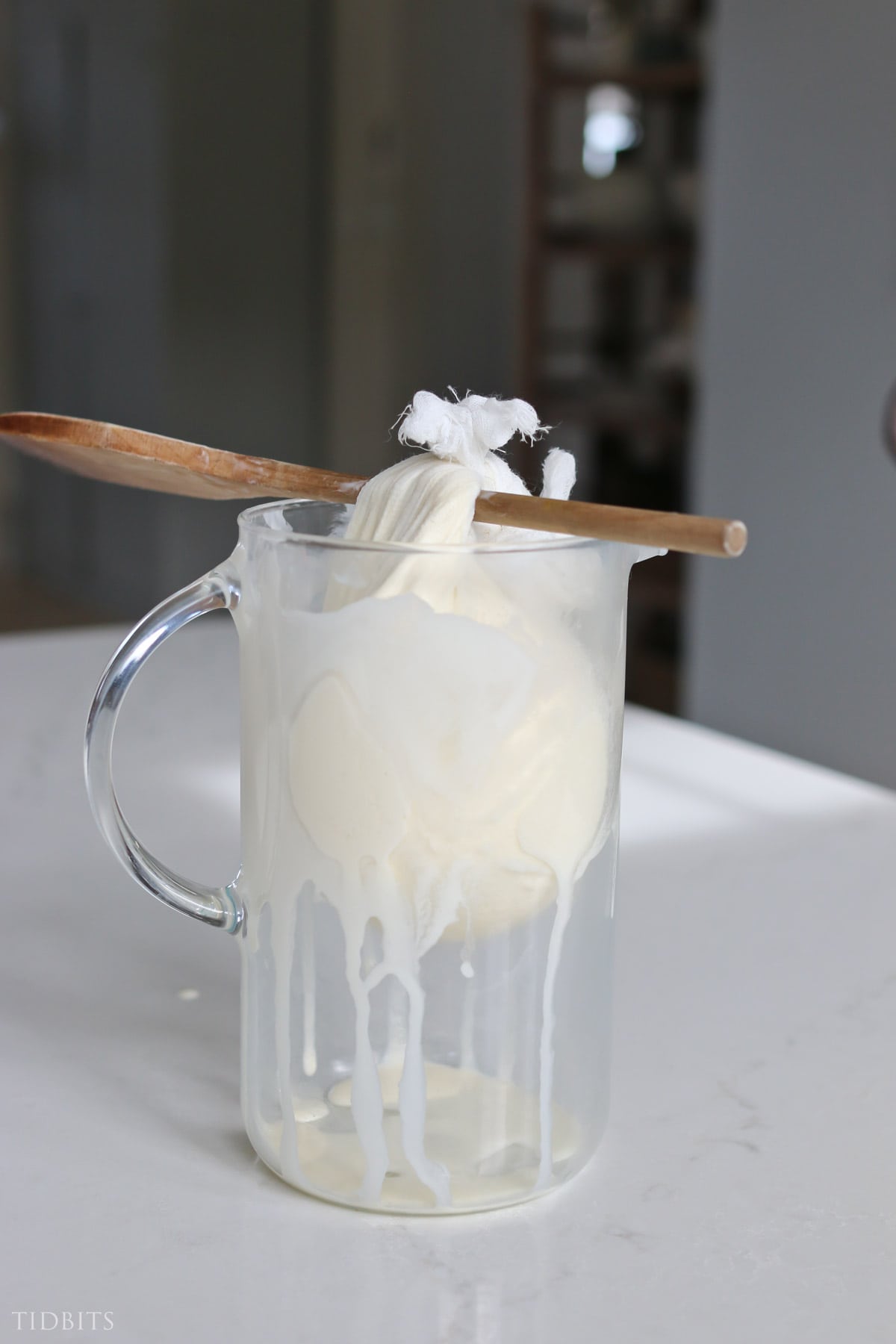
Where to Get Kefir Grains
We get our kefir grains from New England Cheesemaking. They sell real traditional kefir grains. Some kefir grains you can find commercially are actually made in a laboratory and only contain a few strains of the bacteria. Traditional kefir grains are very old. They are descended from the Mongolians and have a very wide variety of bacteria.
In the case of kefir – the more bacteria, the better!
You can also get kefir grains from a friend or neighbor who has cultured their own kefir. Just like sourdough starters, kefir grains can be shared and passed down.
How do I make Kefir?
We learned almost everything we know about kefir and cheesemaking from this book called “The Art of Natural Cheesemaking“. This book focuses on using raw milk and natural ingredients over commercial milk, which is why we love it! There are many online sources to help you learn more about kefir so you can easily make your own cream cheese.
More Recipes to Try
That’s a wrap! I hope you’ve enjoyed learning how simple it is to make your own cream cheese from raw milk. If you try this recipe, I’d love to hear what you think of it! Let me know in the comments section.
For more of my family’s favorite recipes, click over to the full Tidbits recipe collection. Talk to you soon!
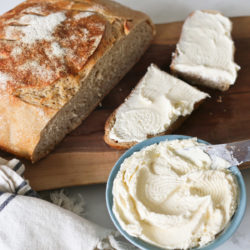
Cream Cheese with Raw Milk
Ingredients
- 32 oz. raw milk cream
- 1 Tbsp of either Kefir, kefir grains, or whey
Instructions
- Pour milk cream into a glass jar. Add your culture (kefir grains, kefir or whey). Close jar and allow it to sit on counter for about 24 hours or until thickened. Check occasionally.
- Once thickened, remove kefir grain if using the kefir grain method.
- Place double layered cheesecloth over a bowl or pitcher. Pour thickened cream into cheesecloth covered bowl. Take the ends of the cheesecloth and tie together over a dowel or long spoon. Lay dowel or spoon across the bowl or pitcher so that the cheese is suspended in the cheesecloth bag. Allow to drain for about 4 hours until a thick pudding-like consistency is reached.
- Remove cream cheese from cloth and stir. Place in food safe container and cover. Store in refrigerator for 4-5 days.
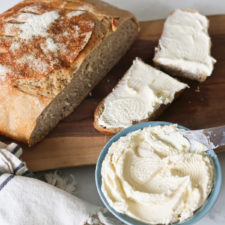

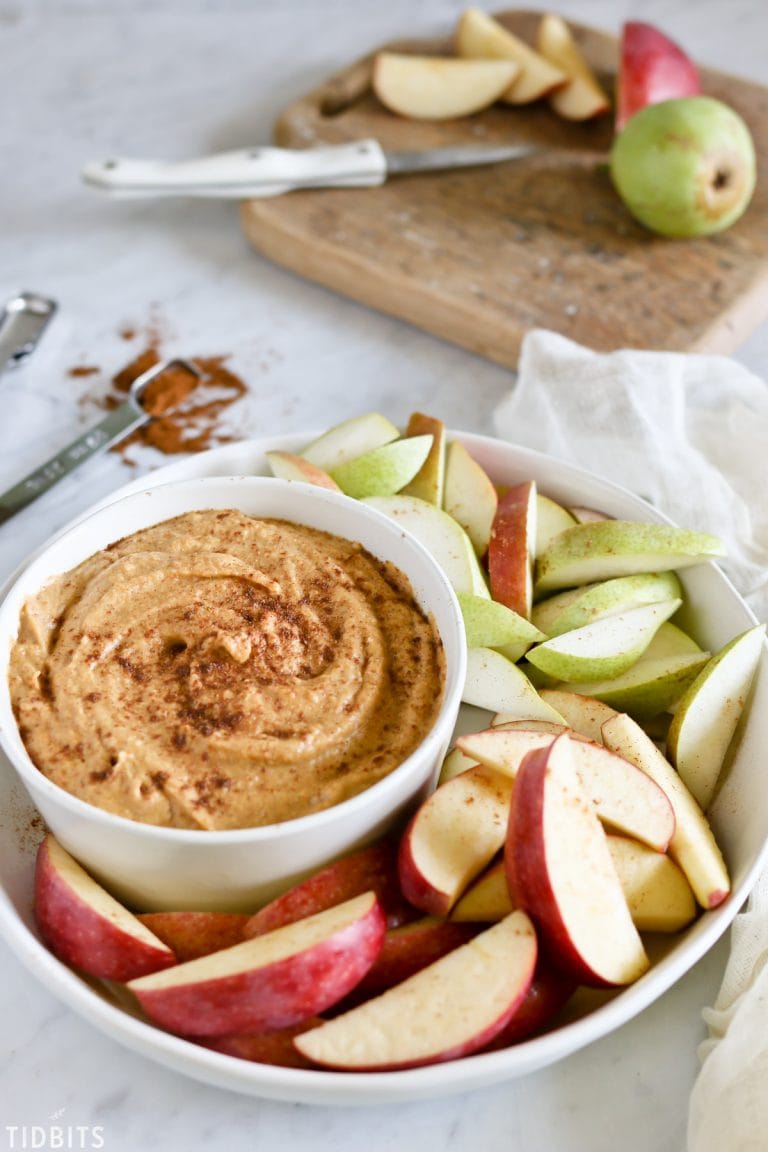



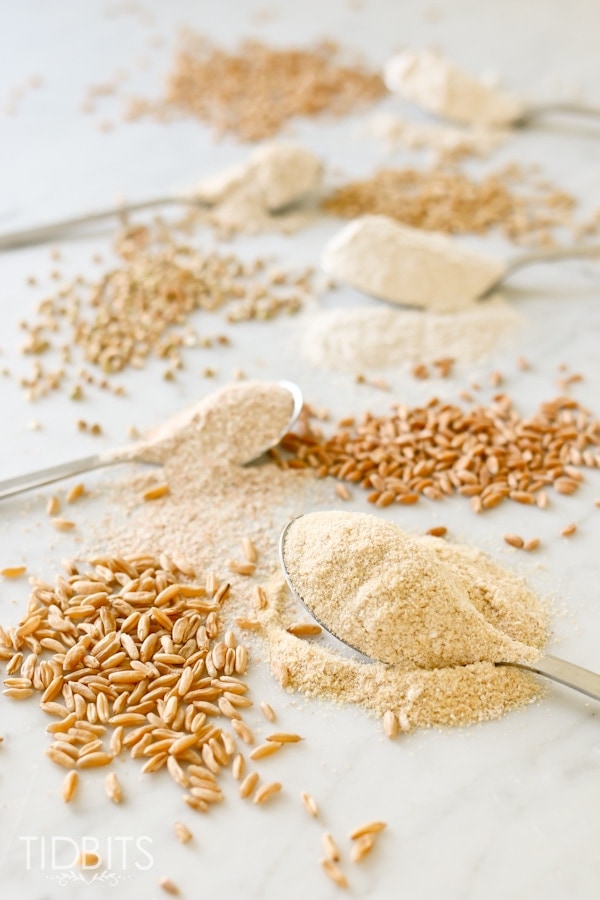







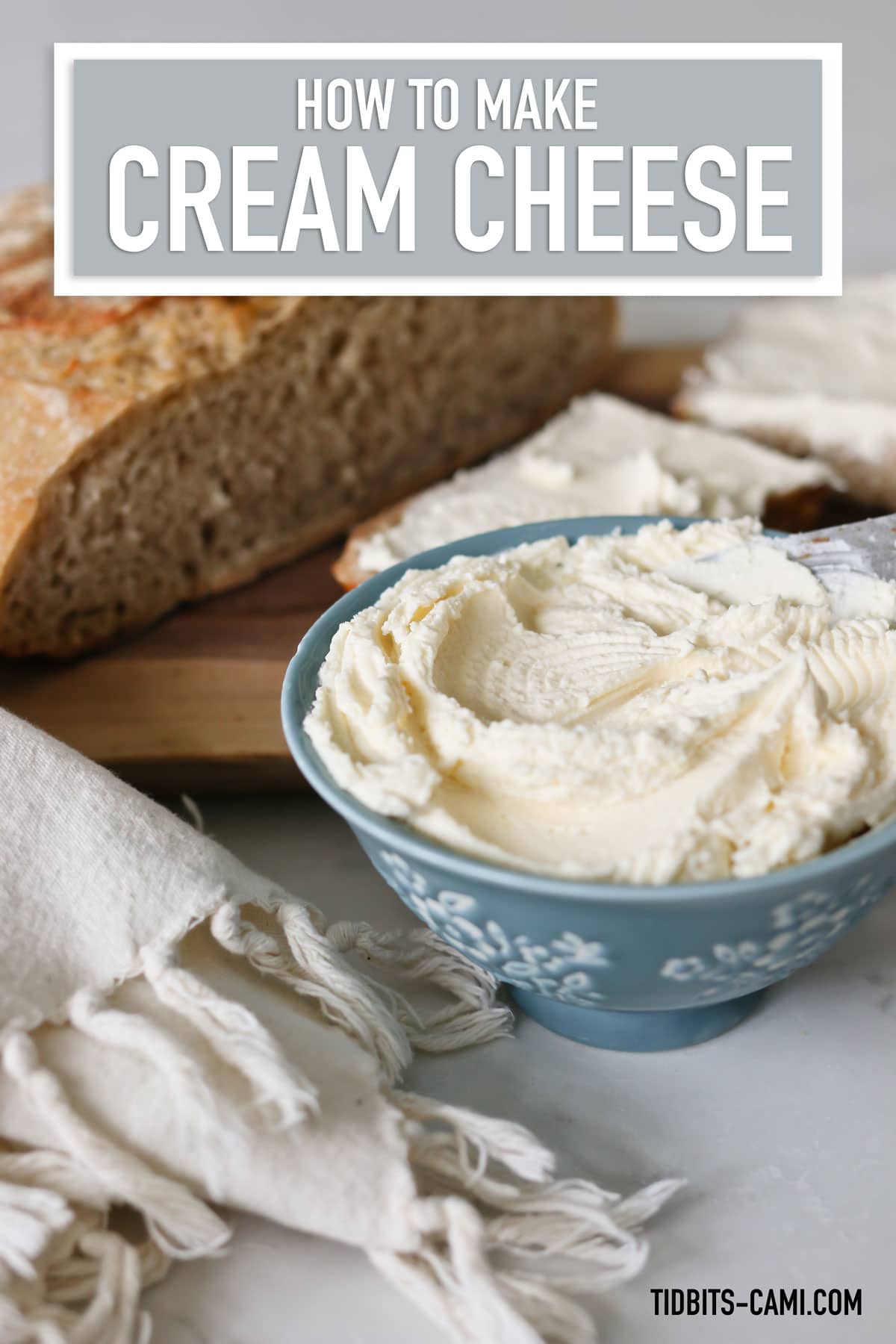
Does this mean I need 32 oz of JUST cream? Or 32 oz of raw milk? I can easily get raw milk, but to get 32 oz of just the cream from the raw milk would mean I’d need to buy many, many half gallons of raw milk then right?
Talk to me about temperature- does the cream need to be at room temp before adding the whey? Whey at room temp? Then does it all sit out at room temp while you are waiting on it to thicken up?
SO excited to try this, love the idea of your method being so easy!
Yes, we like to get it to room temp before adding the grains/whey. That is the best temp for the bacterial to grow that is needed to thicken it up. I hope that helps!